The Building Renovation
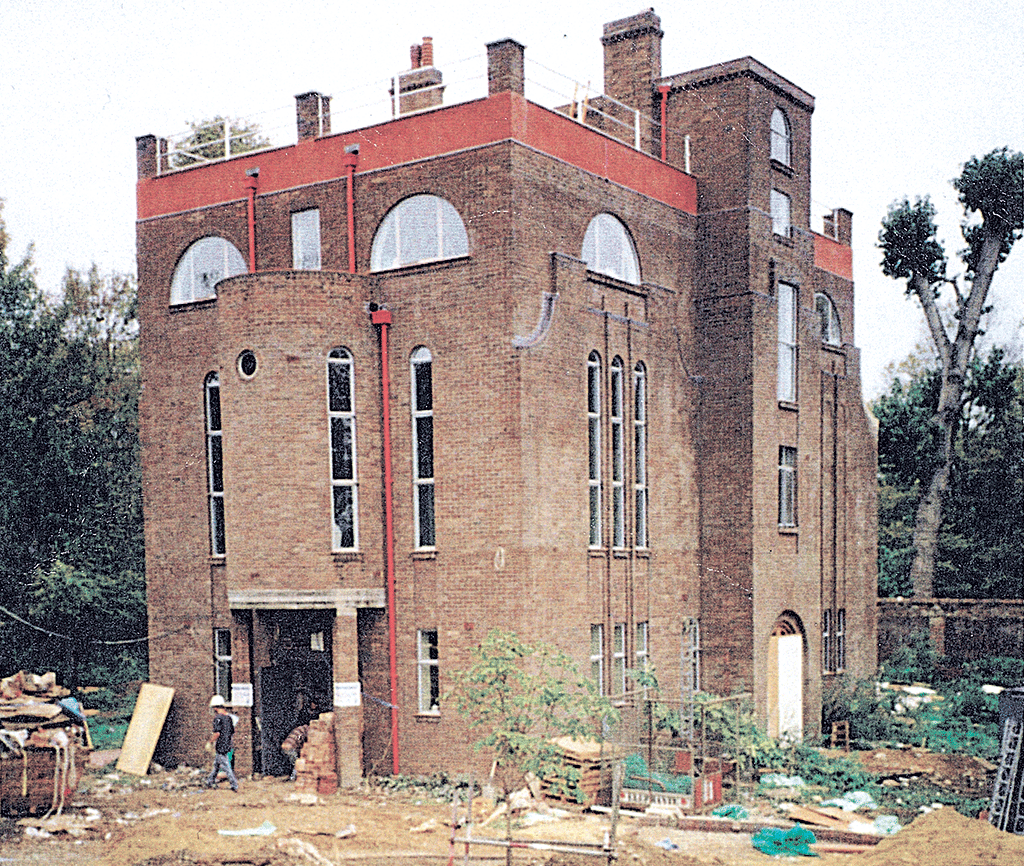
The sensitive restoration of Dorich House commenced in 1994, following the appointment of the architects David Brown and Partners. When completed two years later, an article in the Surrey County Magazine in October 1996 concluded “The restoration aimed to recreate the atmosphere of the calm and focused lives of Dora and Richard’s heyday in the first ‘modern era’ of our century, before the intrusive noises of the electronic age shattered the peace”.
Architect Sally Brown, who worked on the project, recalled the enormous amount of research that took place in preparation in order to respond to the brief of minimum intervention and a renovation “completely in sympathy with the original building”. Documentation from the National Monuments Records Centre in Swindon (now the Historic England Archive) including photographs, press cuttings and information about the original materials and finishes of Dorich House aided this research.
A team of consultants was chosen to work alongside David Brown and Partners and their first task was to carry out a series of investigative works to evaluate the condition of the building and determine the remedial actions required to restore and convert it for University use. Reviewing the refurbishment of Dorich House in The Architects’ Journal in September 1996, Andrew Mead described how the building would “serve various educational purposes for the university while showing, to their advantage, the artworks that Gordine both made and collected.”
Once the initial investigative works had been carried out, including a thorough and accurate assessment of the entire plot, a full set of plans, elevations, sections and detail drawings were produced by the architects. These documented the house alterations and the works involved in modifying the landscaping. In a recent interview, Sally Brown recalled some of the key considerations in the refurbishment of the house.
Weatherproofing
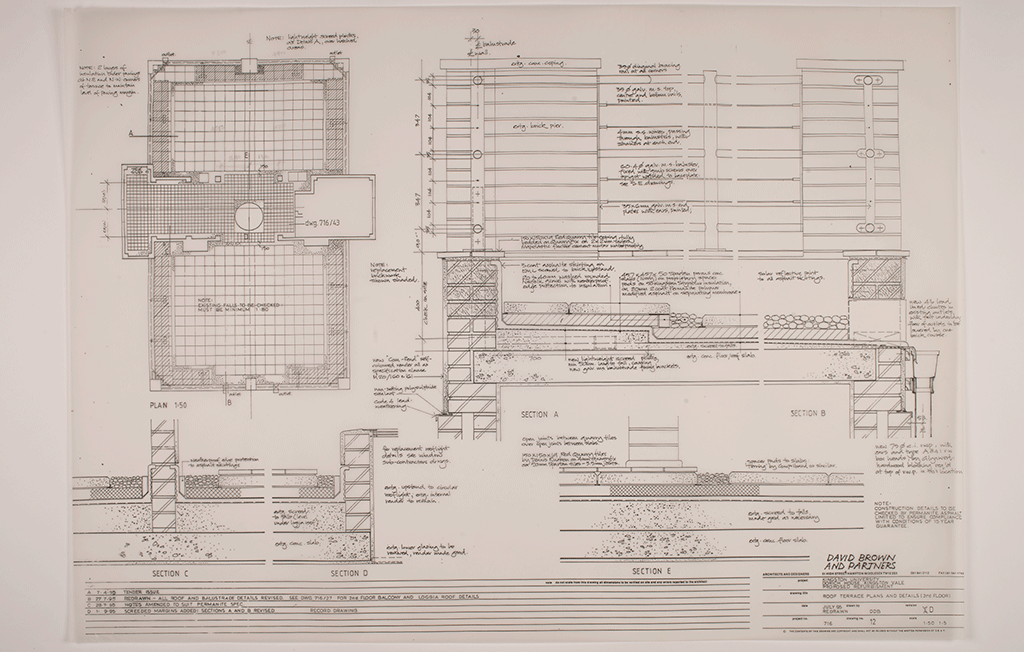
A major part of the restoration was “to make the building watertight”. There was serious water ingress on the top floor in the apartment and in the first floor modelling studio. On the top floor terrace and sleeping area “the roofing had to be completely lifted because the whole thing was leaking like a sieve”. The roof was stripped to slab level, re-insulated and re-asphalted. “But in putting the new paving down and the new roofing it was designed so that it looked like the original quarry tile paving on the top terrace”.
Windows
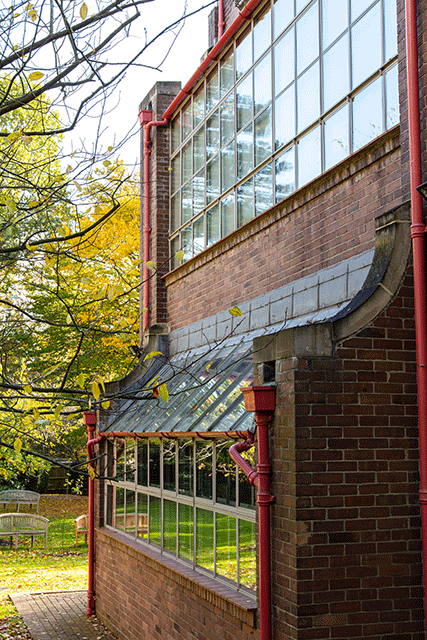
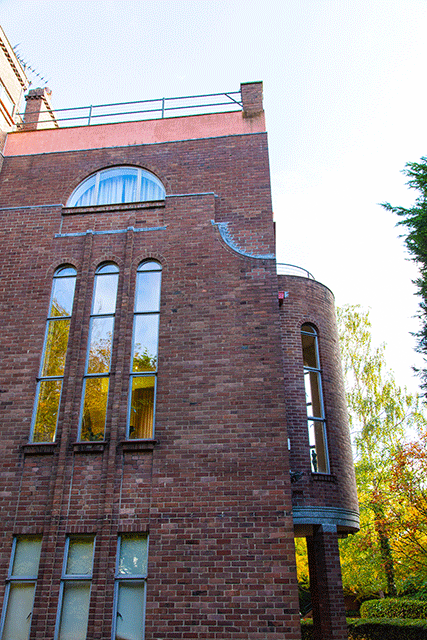
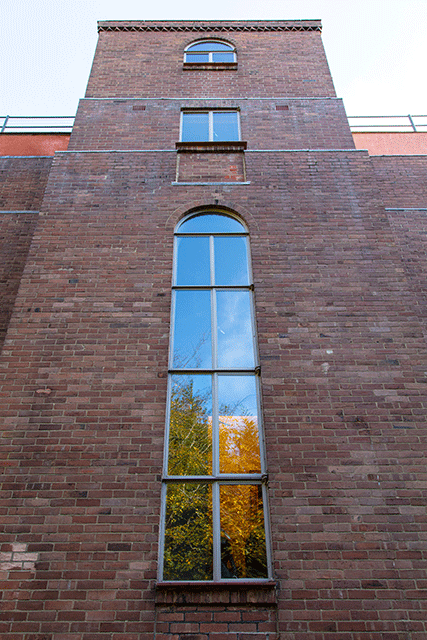
Another extensive part of the restoration project was the replacement of the windows, which had rusted to such a degree that this was the only course of action. The window subcontractor, Clement Brothers, still produced the original metal sections used at Dorich House and, in addition, had developed a method for double-glazing and weather stripping which was adopted throughout. As Brown explained, an added complication was the fact that the “big windows in the main studio and under studio… had to have new structural steelwork”.
Brickwork and Exterior Finishes
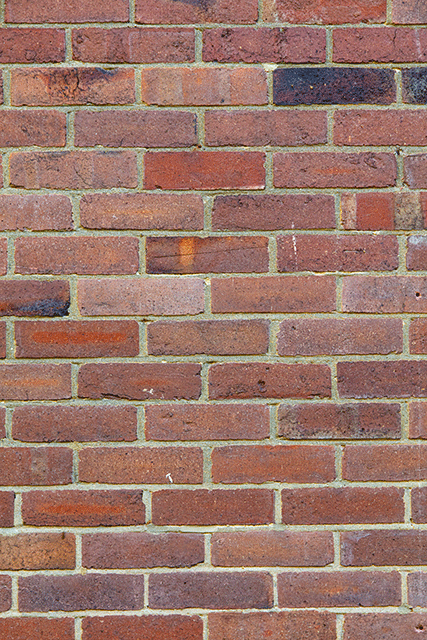
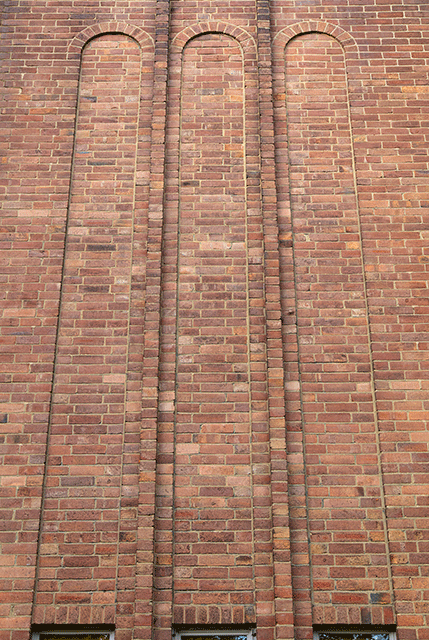
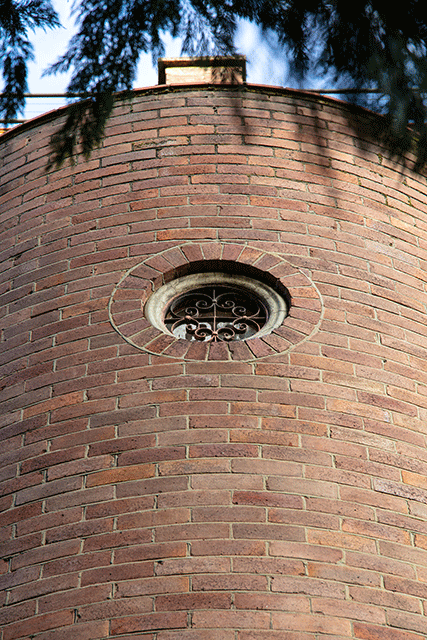
The house, built with cavity walls for the most part, solid in places, required small areas of the unusual brickwork to be replaced, most obviously beneath the two large lunettes on the north elevation. Sally Brown explained that Gordine “used bricks that were in current use in the 1930’s for making railway cuttings and railway embankments… very industrial semi-engineering bricks which are quite hard… and we needed to have something to match. There was this tiny brickworks in Wales that was still making them. And we were able to source enough to do what remedial brickwork was needed on the outside to match what was there”.
Externally, Brown explained the difficulty in sourcing suitable materials and finishes, noting of the unusual pink drainpipes and pink render on the roof terrace – “that’s how they were originally… we had to take off the original pink render around the top and find a substitute for it. And it did come up slightly brighter than the original. But we had to find products that would more or less completely copy what was there”.
Internal Alterations and Building Regulations
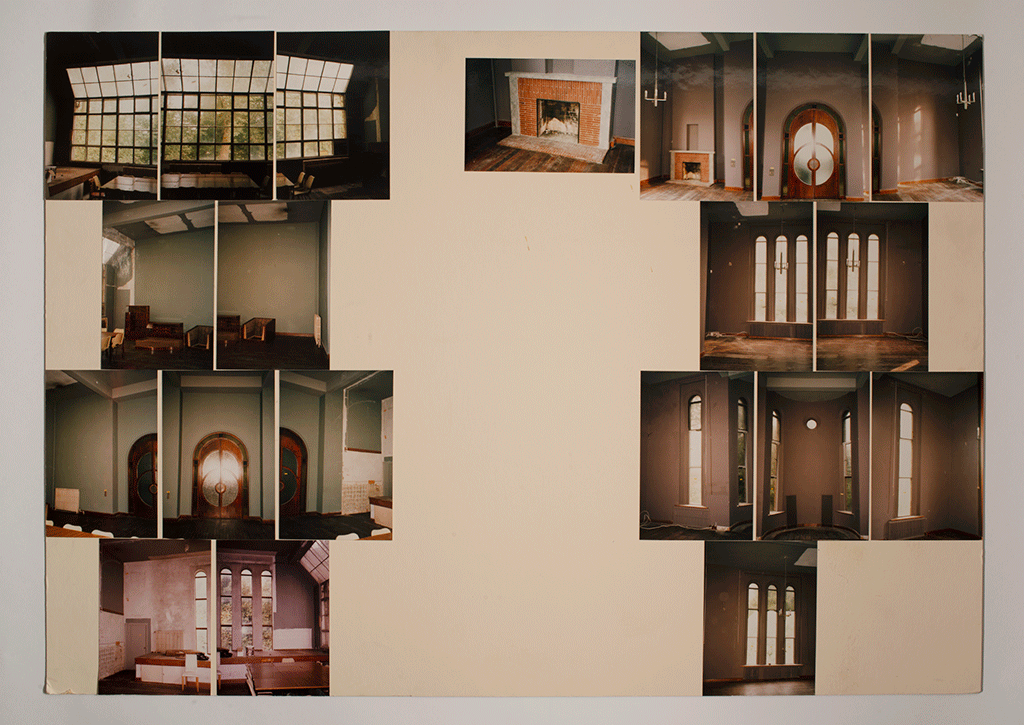
In order to convert Dorich House for University use, a number of internal alterations were required to bring it up to modern standards. A formal Change of Use under Planning and Building Regulations had to be obtained. In addition, as the building was Grade II listed, any alterations required Listed Building Consent. On the first floor, the suite of rooms that had comprised Gordine’s modelling studio and gallery had to be separated with new fire doors.
The required separation of the floors was achieved by the provision of a new partition at the head of the stairs from first to second floor, with an inward opening door to the top floor apartment. Sally Brown recalled that the flat had to have its own separate escape method and that “By great good fortune there was a tiny space off the kitchen in the flat, which housed originally a dumb waiter which went from that level down to the boiler room at the back and out into the garden which she [Dora Gordine] used for shopping and such things… so we were able to get a spiral staircase there…that was extremely fortunate because otherwise we would have had to put a ghastly construction on the back with a staircase attached”.
On the first floor, Brown explained “We had to introduce the big double doors that go into the main studio and into the gallery”. Prior to this, there had only been a curtain separating the gallery and nothing but an open arch into the modelling studio. Brown recalled the sourcing of the bronze door handles for these new fire doors, which “seemed to be absolutely right for the doors we’d designed”. Not custom made, but unusual and in the spirit of the 1930’s house design.
On the ground floor, alterations to the space included the conversion of the garage into an internal store and an externally accessed meter area by the insertion of a new wall. Ground floor toilets were incorporated, together with two office spaces, one in Richard Hare’s former study and the other in the maid’s former bedroom. The plaster studio was, as Brown explained, “brought back to how it had been” and included the restoration of the original manual sculpture hoist to bring it back into use.
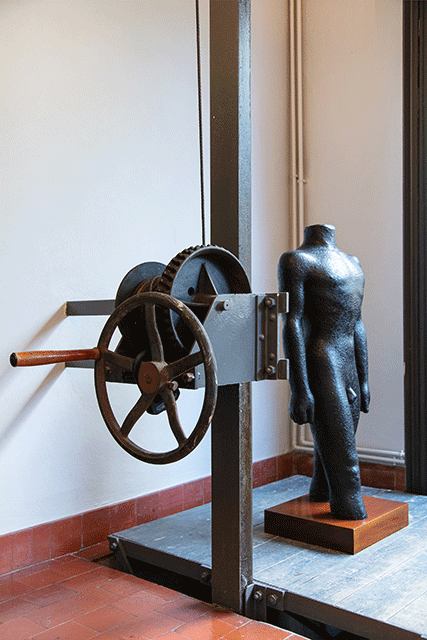
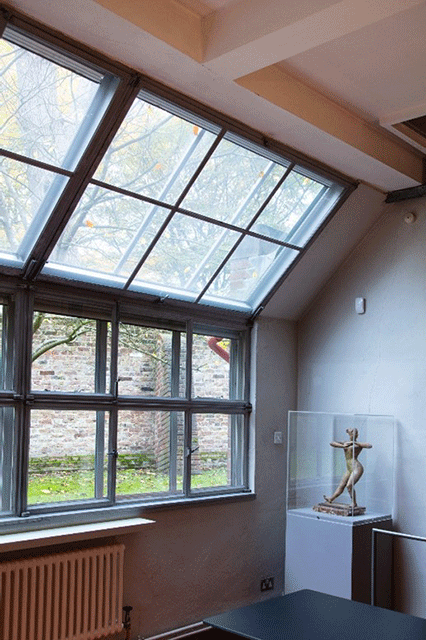
In Gordine’s time, wrought iron gates were added to the staircase for security. These were removed when the building was renovated and were incorporated into the new hardwood doors at the entrance to the house.
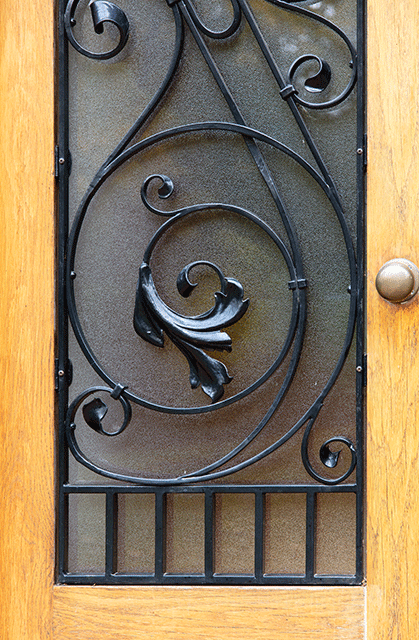
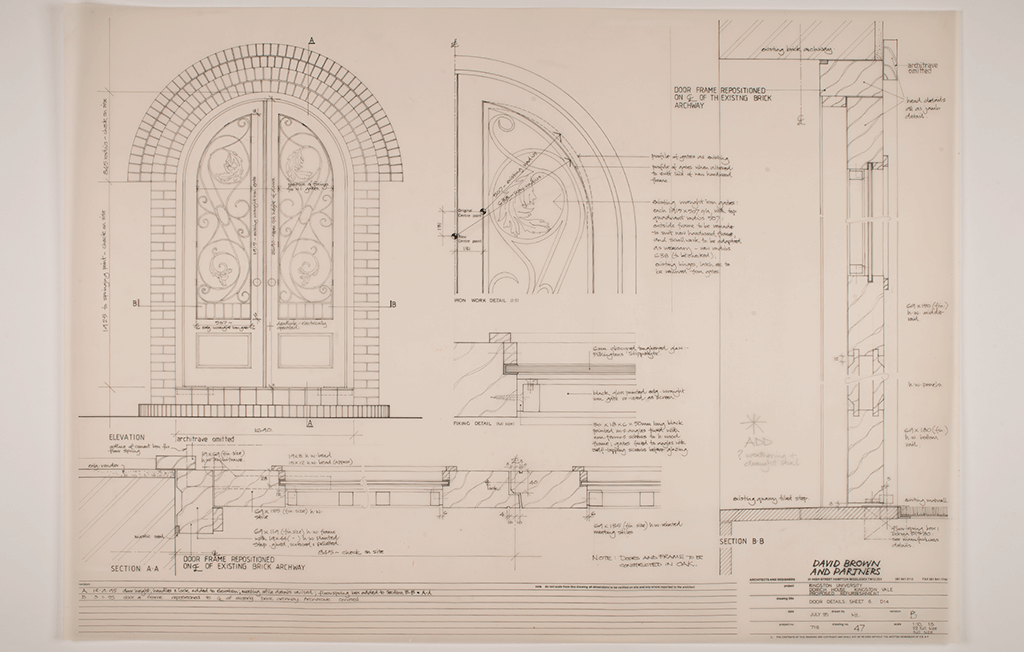
Interior Finishes, Decorations and Services
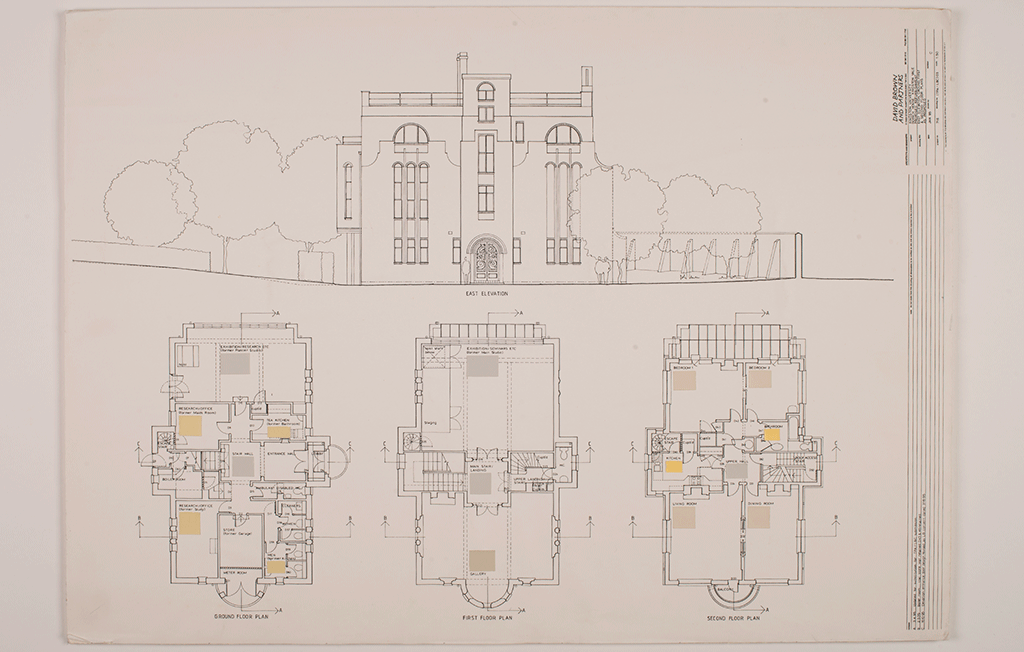
The original hardwood jarrah flooring which flowed from the entrance right up through to the top floor apartment was largely in reasonable condition, apart from the floor in the modelling studio, which Brown recalled was severely water damaged. Fortunately, they were able to lift the timber and source wood to patch and repair, bringing the floors back into good condition.
The hard wearing terracotta quarry tile in the plaster studio was in good condition and required minimal work to restore.
Decoration
Internally, Brown recalled the paint colours when she first arrived on site, “I recollect they had to do with the filming that was done there. They painted the entire thing this macabre greyish purple colour”. Fortunately though, Brown continued, “We found in old documentation, a list of the original colours that were specified. And so we were able to almost throughout the building, bring back the colours Dora originally had. And in the case of the studios, the texture that was on the walls, which was as near as possible to the original, which we did by using masonry paint…even the yellow up in the kitchen was as originally specified”.
Another unusual feature of the building was the heating. Brown remembers “huge hot water pipes embedded in the corners between the floors and the walls” which had to be removed and replaced with small pipes “and radiators that looked as period as possible”.
Fixtures and Fittings and Furnishings
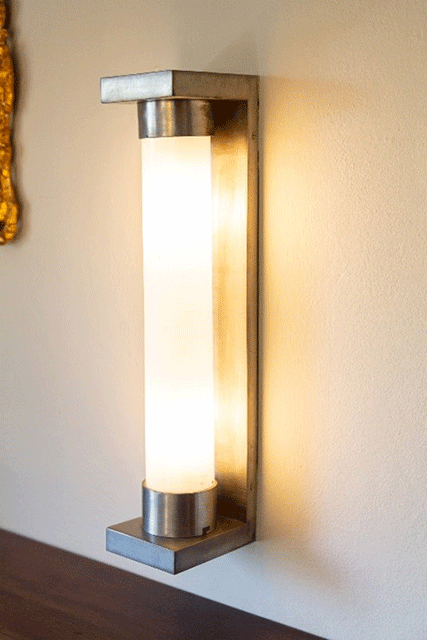
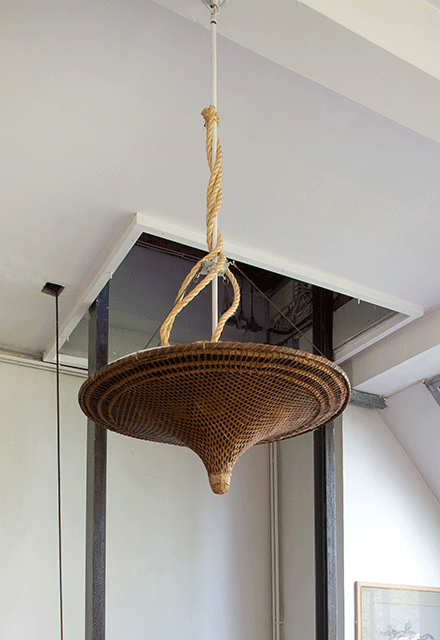
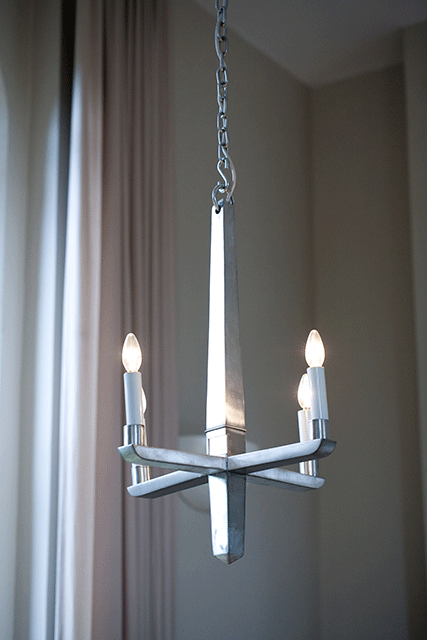
Careful attention was given to the lighting. New spotlights were added to the modelling studio, apartment and the offices, but fittings designed by Gordine were restored, including the unusual light fittings made from rice workers’ hats in the plaster and modelling studios. To the disbelief of the contractors, Brown explained that they “spent quite a lot of money having some of the best of them [rice workers hats] put in the plaster studio and modelling studio. We put aluminium supports in them to make them usable and modern day and suspend them properly”.
Fortunately, many of the building’s unique details required minimal work to restore. The original fireplaces, the moon doors in the top floor apartment and the stair balustrade details were not in need of major refurbishment and with careful attention were returned to their original appearance.
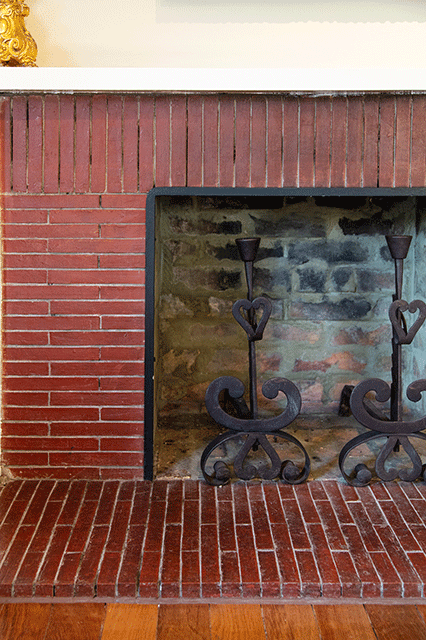
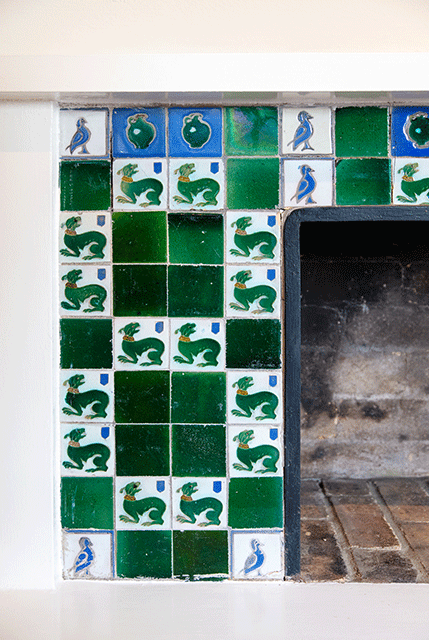
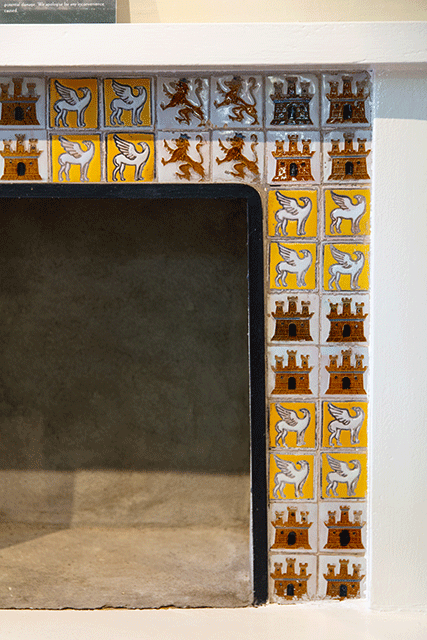
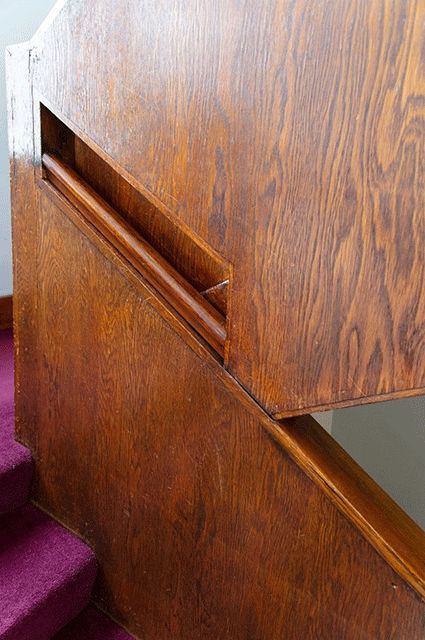
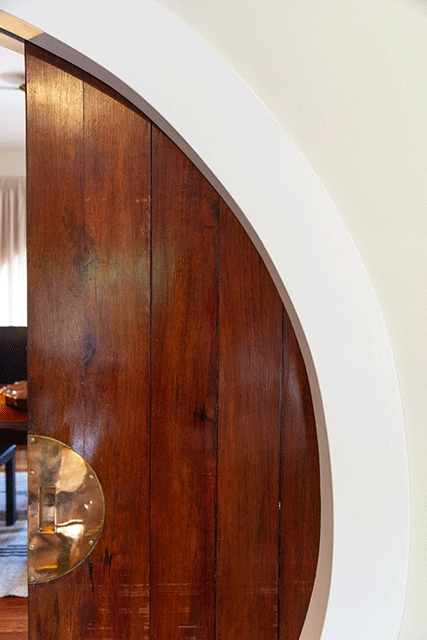
Furnishing Additions
Towards the end of the project, the architects were commissioned to furnish the apartment in a style that complemented the 1930s. Rugs were commissioned from Jason Collingwood and a new sofa and armchairs purchased for the living room. A new dining table and buffet were designed by Sally Brown to be used by University staff and visitors and to sit alongside smaller items of original furniture from the house.
In 1998, the success of the refurbishment was recognised with a prestigious Civic Trust commendation. The scheme marks exceptional architectural and environmental projects around the UK and the citation described the building as “making a valuable contribution to the quality and appearance of the environment”. The commendation was also a tribute to the hard work and dedication of the project team.
Looking back at the awful condition of Dorich House when she and David were first invited to renovate it, and at what they and all those involved had achieved, Sally Brown concluded “It was an astonishing project to be involved in, really lucky. Yes – you see through the mess!”
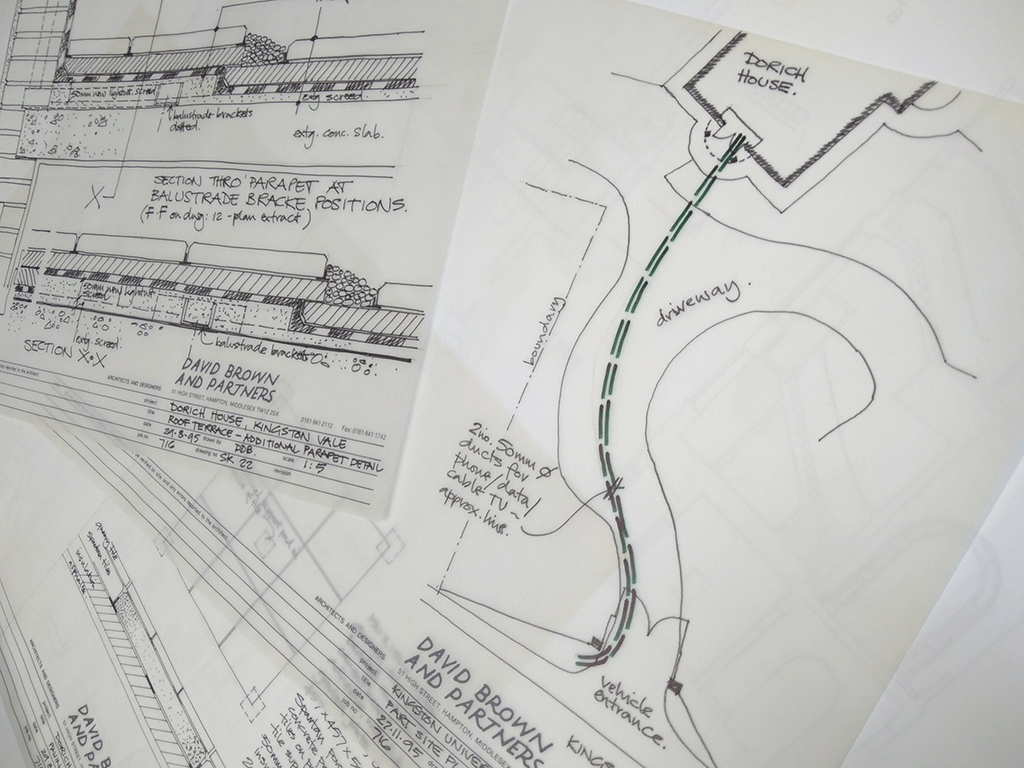
David Brown and Partners kindly donated their architectural plans and records of the renovation of Dorich House to the museum’s archive. As part of this strand of the project, with training from our project archivist Nancy Lyons, our volunteers have photographed and catalogued the architectural plans. Staff at Kingston School of Art’s state-of-the-art photography facilities supported them to develop their skills in digitising the large format plans and records. These plans are now available for Kingston University staff and students to access as a learning resource and provide a valuable record of the works undertaken.
Published as part of the project The Squatter Years: Recovering Dorich House Museum’s Recent Past, funded by the National Lottery Heritage Fund, February 2021.

